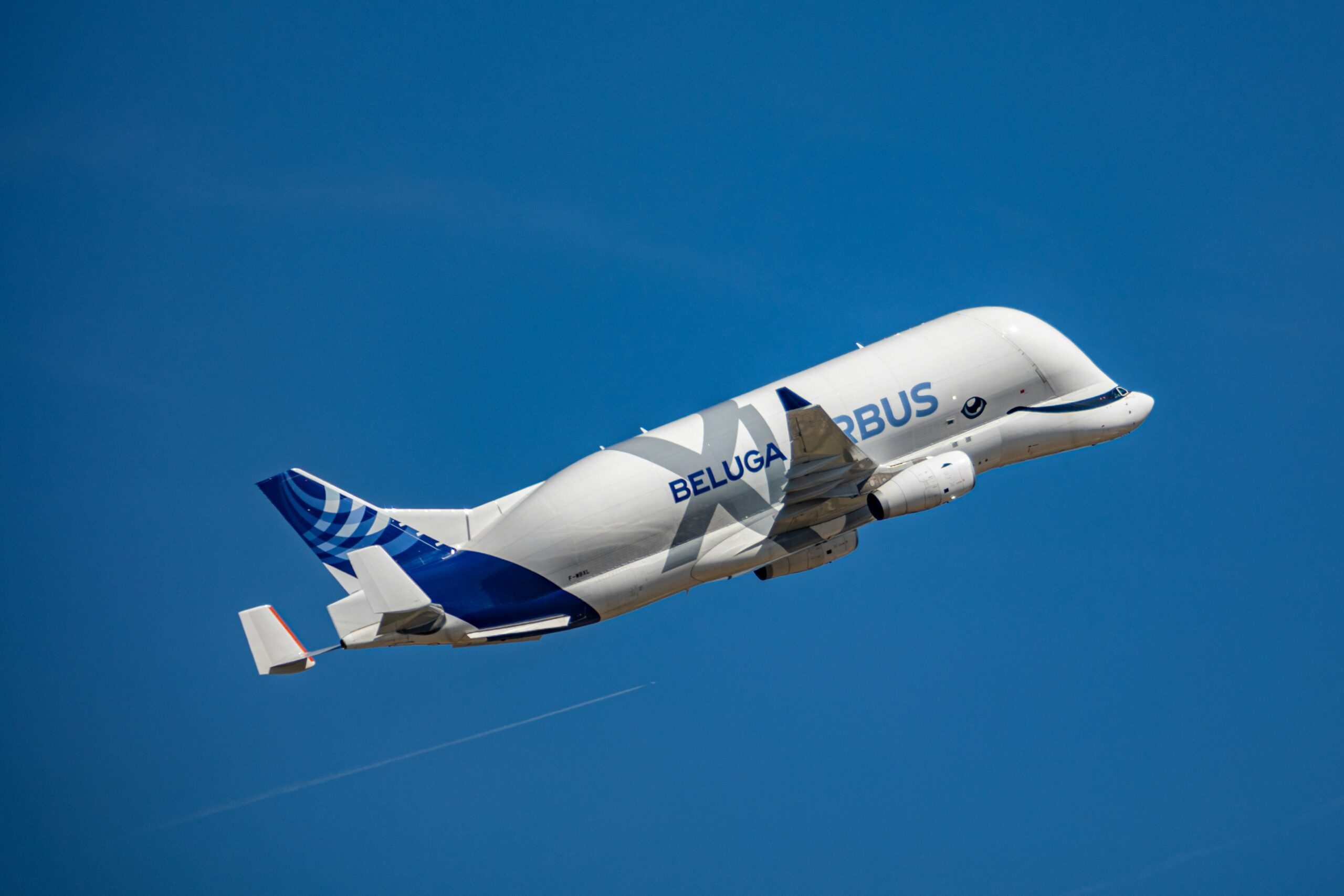The Largest Planes In History
In the history of aviation, the quest for innovation and efficiency has led to the development of some very large planes. These colossal flying machines represent a remarkable stride in technological prowess, promising revolutionary changes in the aviation landscape. Their sheer size and capabilities redefine the possibilities of air travel, marking a new era in the industry. Not to mention, these large planes serve a multitude of purposes, from transporting massive cargo loads to providing unparalleled luxury in passenger travel. In addition, their design and engineering showcase the industry’s commitment to pushing boundaries. Altogether, these giants of the sky stand as a testament to human ingenuity and the unending pursuit of advancement in aviation.
Furthermore, the impact of these planes is marked not only by their physical dimensions but also by the marked advancements in efficiency and sustainability they bring to the aviation sector. For instance, the increased capacity for transporting goods and passengers substantially contributes to economies of scale. Similarly, the development of more fuel-efficient engines and materials underscores a commitment to environmental sustainability. However, challenges and concerns can arise in tandem with these monumental achievements.
It’s important to navigate these hurdles with the aim of ensuring that the benefits of these engineering marvels far outweigh any drawbacks. On one hand, their introduction offers unprecedented opportunities for global trade and connectivity. On the other hand, ensuring safe and efficient operations becomes paramount.
The largest planes in history are not merely flying machines; they represent a fusion of innovation, necessity, and ambition. By comparison, the strides made in aviation through these colossal aircraft showcase the industry’s ability to adapt, evolve, and reach new heights. Accordingly, the largest planes exemplify the ongoing narrative of human achievement.
Boeing 747-8: Iconic Jumbo Jet
Boeing’s 747-8, an evolution of the quintessential Jumbo Jet, stands out with a wingspan of 68.4 meters. This commercial giant, introduced in 2012, is renowned for its increased length, efficient engines, and advanced aerodynamics. The 747-8 is a testament to Boeing’s commitment to innovation, offering airlines enhanced fuel efficiency and passenger comfort. With its distinctive hump and impressive wingspan, the 747-8 continues to be a symbol of excellence in the aviation industry.
Hughes H-4 Hercules (Spruce Goose): An Aviation Legend
Delve into aviation history with the Hughes H-4 Hercules, affectionately known as the Spruce Goose. A legendary aircraft built in response to wartime needs. Conceived by industrialist Howard Hughes, this massive flying boat boasts a wingspan of 97.5 meters, making it the largest wingspan of any aircraft ever built. Despite its unconventional wooden construction, the Spruce Goose played a unique role during World War II, showcasing technological innovation and ambition.
Although it only completed one brief flight, the Hughes H-4 Hercules remains a symbol of engineering prowess and determination. Beyond its impressive size, the Spruce Goose embodies the spirit of exploration and ambition. Its legacy endures, reminding us that even unconventional ideas can leave a lasting impact on the course of aviation history. With the Oscars only days away, I recommend Martin Scorcese’s “The Aviator” to get some more dramatised insight into Howard Hughes’ obsession with building the largest plane in history.
Airbus A380: The Double-Decker Marvel
Revolutionising commercial aviation, the Airbus A380 takes centre stage as the world’s largest passenger aircraft. The A380 combines elegance and efficiency in an attempt to outdo their biggest rival, Boeing, in the jumbo jet sphere First introduced in 2007, this double-decker giant can accommodate up to 853 passengers in a typical two-class configuration. With a length of 72.7 meters and a wingspan of 79.8 meters, the A380 represents a new era in long-haul travel. Its iconic design and advanced technology redefine the passenger experience, offering unparalleled comfort and amenities.
Beyond its impressive size, the A380 contributes to the overall efficiency of air travel, reducing per-passenger costs and environmental impact. Airlines worldwide utilise its spacious interiors to create luxurious cabins, providing passengers with an unforgettable journey. The Airbus A380 remains a symbol of innovation, demonstrating the endless possibilities within the realm of commercial air travel. Sadly, Airbus has ceased production and the project never achieved profitability. Personally, I liked flying on the A380 as it remains a truly impressive plane and provided a fantastic flying experience.
Lockheed Martin C-5M Super Galaxy: Military Prowess
Enter the realm of military planes with the Lockheed Martin C-5M Super Galaxy, a colossal strategic airlift aircraft with unparalleled capabilities. Initially introduced in the late ’60s, the Super Galaxy underwent a transformation. It has emerged as a modern powerhouse with upgraded engines and avionics. Its colossal size is evident in its length of 75 meters and a wingspan stretching 67.9 meters. With a payload capacity of 142 metric tons, it stands as a critical asset for the United States Air Force, capable of transporting oversized cargo and troops globally.
Not just a mere transporter, the C-5M Super Galaxy plays a pivotal role in military operations. It offers rapid strategic airlift capabilities and flexibility. Its ability to carry oversized and heavy loads, including tanks and helicopters, makes it an essential asset for the U.S. Military. In military logistics, the Lockheed Martin C-5M Super Galaxy remains a symbol of power projection and rapid response, ensuring global mobility for the armed forces.
Antonov An-225 Mriya: A Colossal Cargo Titan
In the realm of aviation giants, the Antonov An-225 Mriya stands unrivalled, a testament to engineering audacity. Sadly, this engineering marvel was destroyed in the Russian invasion of Ukraine, but its memory lives on. Built in 1988, this Ukrainian behemoth boasts dimensions that defy conventional wisdom. With a staggering length of 84 meters and an awe-inspiring wingspan of 88.4 meters, the An-225 commanded attention on the tarmac. Powered by six formidable engines, it showcased unparalleled strength. The payload capacity of 640 metric tons, solidified its status as the world’s largest cargo plane. The Antonov An-225 Mriya reigned supreme, symbolising the limitless potential of human ingenuity in conquering the skies.
Beyond its sheer size, the An-225 has become a global workhorse for transporting oversized cargo, ranging from massive machinery to humanitarian aid. Its versatility has made it indispensable in crisis situations, swiftly delivering aid to regions in need. The Antonov An-225 Mriya was not just an amazing feat of engineering but a symbol of global collaboration, connecting distant corners of the world through its colossal wingspan, and remains one of the largest planes ever built.
Airbus Beluga XL: Oversized Cargo Transport
The Airbus Beluga XL, with a wingspan of 60 meters, takes oversized cargo transport to new heights. Serving as Airbus’s super-sized transporter, it plays a vital role in ferrying aircraft components between production facilities. The Beluga XL’s unique design, resembling a beluga whale, captures attention and showcases Airbus’s dedication to efficient logistics. With its cavernous cargo hold and considerable wingspan, the Beluga XL exemplifies how innovation in aviation extends beyond traditional passenger planes.
Stratolaunch: Redefining Aerospace Horizons
Breaking barriers in the aerospace industry, the Stratolaunch could be a game-changer with a revolutionary design. Unveiled in 2017, its standout feature is the unprecedented wingspan of 117 meters, surpassing any aircraft before it. Powered by six engines adapted from Boeing 747s, this twin-fuselage giant is not just about size. It’s a visionary platform for launching rockets into space. With a weight capacity of 250 metric tons, the Stratolaunch redefines the dynamics of space exploration, offering a cost-effective and flexible approach to reaching the cosmos.
The Stratolaunch isn’t just an idea for a plane; it’s a launchpad in the sky, providing a mobile and adaptable platform for sending satellites and payloads into orbit. This airborne launch system reduces the constraints of traditional ground-based launches, allowing for more precise and flexible mission planning. The Stratolaunch positions itself at the forefront, charting a course for a new era of space exploration and commercial satellite deployment.
The Future Of The Largest Planes
As we attempt to look into the future of aviation, it becomes clear that innovation will spearhead ground-breaking developments. Another era of engineering marvels is on the horizon, where further advancements in materials, propulsion systems, and aerodynamics will redefine air travel. In other words, the trajectory of aviation is poised for unprecedented transformations, not to mention the potential emergence of sustainable and eco-friendly technologies. For instance, electric propulsion and hydrogen-powered engines could revolutionise the landscape of large planes, offering environmentally conscious alternatives. The ongoing pursuit of faster and more efficient travel will undoubtedly lead to aircraft marked by increased range, fuel efficiency, and passenger comfort. Regardless of the challenges, the aviation industry will continue to push boundaries, with companies vying to create the next generation of large planes. In any case, the future promises an exciting chapter in aviation history, marked by cutting-edge technologies, resilient engineering, and a commitment to elevating air travel to new heights.
Final Thoughts
The largest planes epitomise human achievement, showcasing innovation and redefining air travel. Another chapter in aviation’s saga, these colossal marvels mark an exciting era, promising soaring possibilities. The relentless pursuit of excellence and ambition propels us into a future where the sky is no limit but a canvas for exploration. The largest planes’ legacy shows not just in dimensions but in their impact on how we navigate the world. As we witness these wonders, it’s evident our journey into the skies has just begun.
Furthermore, the fusion of engineering brilliance and aviation prowess continues to push boundaries, fostering perpetual innovation. Looking ahead, the future promises more advancements in aircraft design and functionality. It’s about crafting a narrative of human ingenuity that soars above the clouds, leaving an indelible mark on aviation history. The largest planes are milestones toward a future where the sky is not a destination but a realm of endless possibilities.

